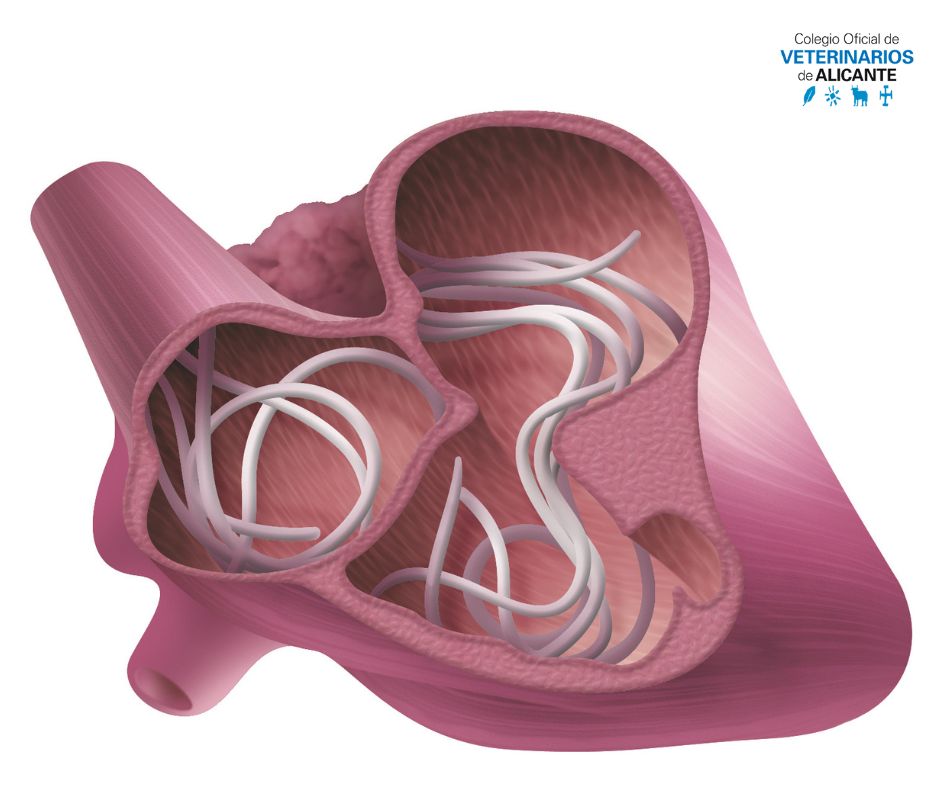

Puede dirigir sus consultas al Colegio de Veterinarios de Alicante enviando un mensaje a la siguiente dirección: secretaria@icoval.org

Dirofilariasis is a parasitic disease caused by nematodes of the genus Dirofilaria. The two most common species affecting mammals are Dirofilaria immitis, known as the heartworm, and Dirofilaria repens. Although this disease is most prevalent in dogs and cats, it can also affect other mammals, including humans.
The life cycle of Dirofilaria involves two hosts:
In humans, Dirofilaria infection is rare and usually asymptomatic. However, when it does occur, it can manifest itself in the following ways:
Pulmonary nodules: Dirofilaria immitis can migrate to the lungs and cause the formation of a nodule, which may be discovered incidentally on a chest X-ray. Although often benign, it may be mistaken for a malignant tumour until a biopsy is performed.
Diagnosis in animals: In dogs and cats, diagnosis is made by blood tests that detect adult worm antigens or microfilariae. Echocardiography and radiography may also be used to assess the presence and damage caused by the worms.
Diagnosis in humans: In humans, dirofilariasis is often diagnosed after surgery or biopsy of a suspicious nodule. Identification of the parasite in the specimen confirms the diagnosis.
Treatment: In dogs, treatment includes anti-parasitic drugs to eliminate adult worms and microfilariae, as well as treatments to control symptoms and cardiovascular complications. In advanced cases, surgery may be necessary to remove the worms. In cats, treatment is more complex due to the animal's sensitivity to anti-parasitic drugs; it focuses on symptom management.
In humans, dirofilariasis does not usually require deworming, as adult parasites do not reach full maturity in humans. Subcutaneous or pulmonary nodules are often surgically removed for diagnostic confirmation and resolution of the problem.
Prevention of dirofilariasis in animals is essential and relies on:
Preventive treatments: Preventive drugs are regularly administered to dogs and cats to kill Dirofilaria larvae before they can mature. These drugs are usually administered monthly.
Diarrhoea is a significant disease in veterinary medicine, especially in areas where mosquitoes are present throughout the year. Its management and prevention are essential for pet health. In humans, although the disease is rare, it is important that clinicians are aware of its existence to avoid misdiagnosis of pulmonary nodules or other symptoms.
In summary, dirofilariasis is a parasitic disease that mainly affects dogs and cats, with serious health consequences if left untreated. Prevention through deworming and mosquito control

Puede dirigir sus consultas al Colegio de Veterinarios de Alicante enviando un mensaje a la siguiente dirección: secretaria@icoval.org